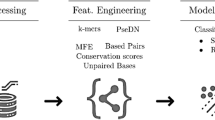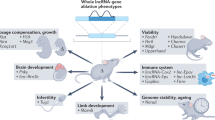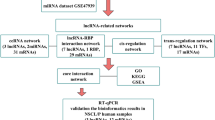Abstract
Large intergenic noncoding RNAs (lincRNAs) are emerging as key factors of multiple cellular processes. Cumulative evidence has linked lincRNA polymorphisms to diverse diseases. However, the global properties of lincRNA polymorphisms and their implications for human disease remain largely unknown. Here we performed a systematic analysis of naturally occurring variants in human lincRNAs, with a particular focus on lincRNA polymorphism as novel risk factor of disease etiology. We found that lincRNAs exhibited a relatively low level of polymorphisms, and low single-nucleotide polymorphism (SNP) density lincRNAs might have a broad range of functions. We also found that some polymorphisms in evolutionarily conserved regions of lincRNAs had significant effects on predicted RNA secondary structures, indicating their potential contribution to diseases. We mapped currently available phenotype-associated SNPs to lincRNAs and found that lincRNAs were associated with a wide range of human diseases. Some lincRNAs could be responsible for particular diseases. Our results provided not only a global perspective on genetic variants in human lincRNAs but also novel insights into the function and etiology of lincRNA. All the data in this study can be accessed and retrieved freely via a web server at http://bioinfo.hrbmu.edu.cn/lincPoly.
Similar content being viewed by others
Log in or create a free account to read this content
Gain free access to this article, as well as selected content from this journal and more on nature.com
or
References
Guttman M, Amit I, Garber M et al: Chromatin signature reveals over a thousand highly conserved large non-coding RNAs in mammals. Nature 2009; 458: 223–227.
Cabili MN, Trapnell C, Goff L et al: Integrative annotation of human large intergenic noncoding RNAs reveals global properties and specific subclasses. Genes Dev 2011; 25: 1915–1927.
Ponting CP, Oliver PL, Reik W : Evolution and functions of long noncoding RNAs. Cell 2009; 136: 629–641.
Nagano T, Mitchell JA, Sanz LA et al: The Air noncoding RNA epigenetically silences transcription by targeting G9a to chromatin. Science 2008; 322: 1717–1720.
Hung T, Wang Y, Lin MF et al: Extensive and coordinated transcription of noncoding RNAs within cell-cycle promoters. Nat Genet 2011; 43: 621–629.
Loewer S, Cabili MN, Guttman M et al: Large intergenic non-coding RNA-RoR modulates reprogramming of human induced pluripotent stem cells. Nat Genet 2010; 42: 1113–1117.
Khalil AM, Guttman M, Huarte M et al: Many human large intergenic noncoding RNAs associate with chromatin-modifying complexes and affect gene expression. Proc Natl Acad Sci USA 2009; 106: 11667–11672.
Gupta RA, Shah N, Wang KC et al: Long non-coding RNA HOTAIR reprograms chromatin state to promote cancer metastasis. Nature 2010; 464: 1071–1076.
Prensner JR, Iyer MK, Balbin OA et al: Transcriptome sequencing across a prostate cancer cohort identifies PCAT-1, an unannotated lincRNA implicated in disease progression. Nat Biotechnol 2011; 29: 742–749.
Calin GA, Liu CG, Ferracin M et al: Ultraconserved regions encoding ncRNAs are altered in human leukemias and carcinomas. Cancer Cell 2007; 12: 215–229.
Qureshi IA, Mattick JS, Mehler MF : Long non-coding RNAs in nervous system function and disease. Brain Res 2010; 1338: 20–35.
Wapinski O, Chang HY : Long noncoding RNAs and human disease. Trends Cell Biol 2011; 21: 354–361.
Pasmant E, Sabbagh A, Vidaud M, Bieche I : ANRIL, a long, noncoding RNA, is an unexpected major hotspot in GWAS. FASEB J 2010; 25: 444–448.
Jin G, Sun J, Isaacs SD et al: Human polymorphisms at long non-coding RNAs (lncRNAs) and association with prostate cancer risk. Carcinogenesis 2011; 32: 1655–1659.
Karolchik D, Baertsch R, Diekhans M et al: The UCSC genome browser database. Nucleic Acids Res 2003; 31: 51–54.
Kozomara A, Griffiths-Jones S : miRBase: integrating microRNA annotation and deep-sequencing data. Nucleic Acids Res 2011; 39: D152–D157.
Dermitzakis ET, Reymond A, Lyle R et al: Numerous potentially functional but non-genic conserved sequences on human chromosome 21. Nature 2002; 420: 578–582.
Nobrega MA, Ovcharenko I, Afzal V, Rubin EM : Scanning human gene deserts for long-range enhancers. Science 2003; 302: 413.
Hindorff LA, Sethupathy P, Junkins HA et al: Potential etiologic and functional implications of genome-wide association loci for human diseases and traits. Proc Natl Acad Sci USA 2009; 106: 9362–9367.
Goh KI, Cusick ME, Valle D, Childs B, Vidal M, Barabasi AL : The human disease network. Proc Natl Acad Sci USA 2007; 104: 8685–8690.
Garmire LX, Garmire DG, Huang W, Yao J, Glass CK, Subramaniam S : A global clustering algorithm to identify long intergenic non-coding RNA—with applications in mouse macrophages. PLoS One 2011; 6: e24051.
Liao Q, Liu C, Yuan X et al: Large-scale prediction of long non-coding RNA functions in a coding-non-coding gene co-expression network. Nucleic Acids Res 2011; 39: 3864–3878.
Huang da W, Sherman BT, Lempicki RA : Systematic and integrative analysis of large gene lists using DAVID bioinformatics resources. Nat Protoc 2009; 4: 44–57.
Beissbarth T, Speed TP : GOstat: find statistically overrepresented gene ontologies within a group of genes. Bioinformatics 2004; 20: 1464–1465.
Bauer S, Grossmann S, Vingron M, Robinson PN : Ontologizer 2.0—a multifunctional tool for GO term enrichment analysis and data exploration. Bioinformatics 2008; 24: 1650–1651.
Hariharan M, Scaria V, Brahmachari SK : dbSMR: a novel resource of genome-wide SNPs affecting microRNA mediated regulation. BMC Bioinformatics 2009; 10: 108.
Hofacker IL : Vienna RNA secondary structure server. Nucleic Acids Res 2003; 31: 3429–3431.
Halvorsen M, Martin JS, Broadaway S, Laederach A : Disease-associated mutations that alter the RNA structural ensemble. PLoS Genet 2010; 6: e1001074.
Ellinor PT, Lunetta KL, Glazer NL et al: Common variants in KCNN3 are associated with lone atrial fibrillation. Nat Genet 2010; 42: 240–244.
Gudbjartsson DF, Arnar DO, Helgadottir A et al: Variants conferring risk of atrial fibrillation on chromosome 4q25. Nature 2007; 448: 353–357.
Benjamin EJ, Rice KM, Arking DE et al: Variants in ZFHX3 are associated with atrial fibrillation in individuals of European ancestry. Nat Genet 2009; 41: 879–881.
Hardison RC : Conserved noncoding sequences are reliable guides to regulatory elements. Trends Genet 2000; 16: 369–372.
Mick E, Todorov A, Smalley S et al: Family-based genome-wide association scan of attention-deficit/hyperactivity disorder. J Am Acad Child Adolesc Psychiatry 2010; 49: 898–905 e893.
Sladek R, Rocheleau G, Rung J et al: A genome-wide association study identifies novel risk loci for type 2 diabetes. Nature 2007; 445: 881–885.
Mercer TR, Dinger ME, Sunkin SM, Mehler MF, Mattick JS : Specific expression of long noncoding RNAs in the mouse brain. Proc Natl Acad Sci USA 2008; 105: 716–721.
Scott LJ, Muglia P, Kong XQ et al: Genome-wide association and meta-analysis of bipolar disorder in individuals of European ancestry. Proc Natl Acad Sci USA 2009; 106: 7501–7506.
Saxena R, Voight BF, Lyssenko V et al: Genome-wide association analysis identifiesloci for type 2 diabetes and triglyceride levels. Science 2007; 316: 1331–1336.
Consortium TWTCC: Genome-wide association study of 14 000 cases of seven common diseases and 3000 shared controls. Nature 2007; 447: 661–678.
Zhao Z, Fu YX, Hewett-Emmett D, Boerwinkle E : Investigating single nucleotide polymorphism (SNP) density in the human genome and its implications for molecular evolution. Gene 2003; 312: 207–213.
Saunders MA, Liang H, Li WH : Human polymorphism at microRNAs and microRNA target sites. Proc Natl Acad Sci USA 2007; 104: 3300–3305.
Prensner JR, Chinnaiyan AM : The emergence of lncRNAs in cancer biology. Cancer Discov 2011; 1: 391–407.
Drake JA, Bird C, Nemesh J et al: Conserved noncoding sequences are selectively constrained and not mutation cold spots. Nat Genet 2006; 38: 223–227.
Baranzini SE, Wang J, Gibson RA et al: Genome-wide association analysis of susceptibility and clinical phenotype in multiple sclerosis. Hum Mol Genet 2009; 18: 767–778.
Washietl S, Hofacker IL, Lukasser M, Huttenhofer A, Stadler PF : Mapping of conserved RNA secondary structures predicts thousands of functional noncoding RNAs in the human genome. Nat Biotechnol 2005; 23: 1383–1390.
Ishii N, Ozaki K, Sato H et al: Identification of a novel non-coding RNA, MIAT, that confers risk of myocardial infarction. J Hum Genet 2006; 51: 1087–1099.
Acknowledgements
This research was supported by the National Natural Science Foundation of China (Grant Nos. 91129710, 61073136 and 61170154), the Specialized Research Fund for the Doctoral Program of Higher Education of China (Grant Nos. 20102307110022) and the Science Foundation of Heilongjiang Province (Grant No. D200834).
Author information
Authors and Affiliations
Corresponding author
Ethics declarations
Competing interests
The authors declare no conflict of interest.
Additional information
Supplementary Information accompanies the paper on European Journal of Human Genetics website
Supplementary information
Rights and permissions
About this article
Cite this article
Ning, S., Wang, P., Ye, J. et al. A global map for dissecting phenotypic variants in human lincRNAs. Eur J Hum Genet 21, 1128–1133 (2013). https://doi.org/10.1038/ejhg.2013.7
Received:
Revised:
Accepted:
Published:
Issue date:
DOI: https://doi.org/10.1038/ejhg.2013.7



